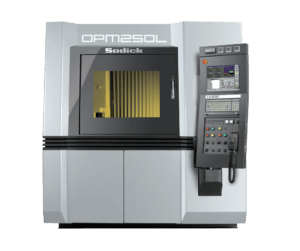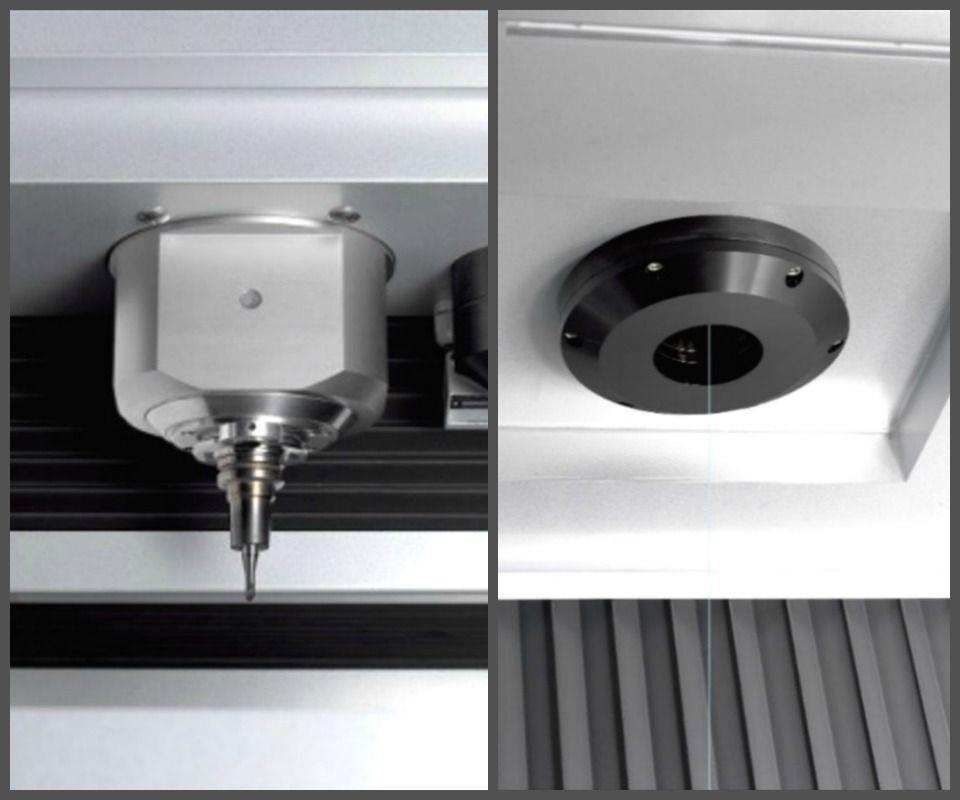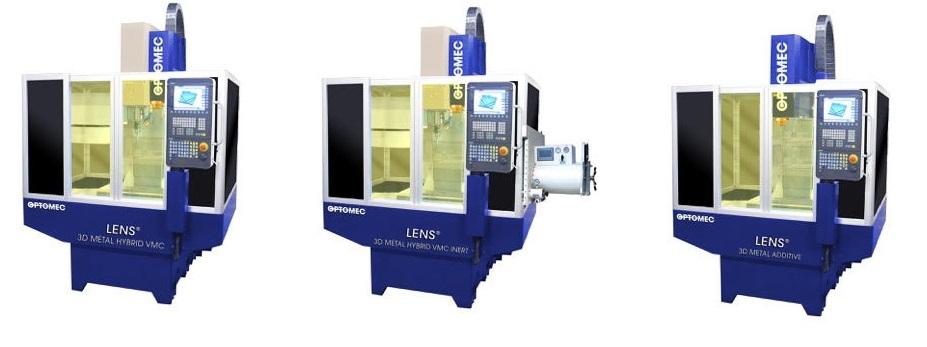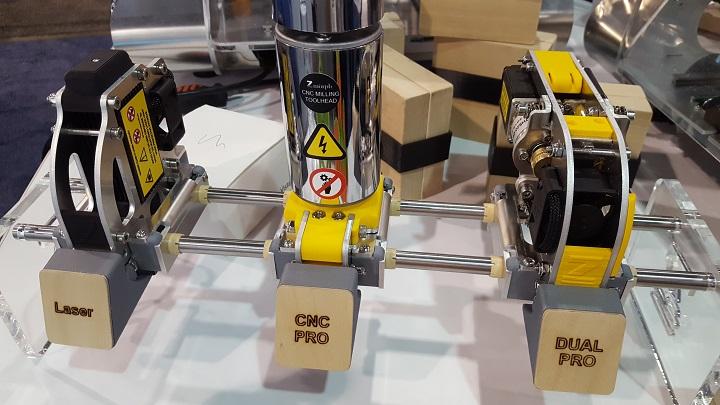Additive Manufacturing Isn’t the Whole Answer: Why Hybrid Technologies Are the Future of Manufacturing
Obviously here at 3DPrint.com we think 3D printing is the bee’s knees; additive manufacturing techniques are finding their way into nearly every area of production, having started in the 1980s by presenting a rapid prototyping solution. Here we are now in 2017 and 3D technology has spread to every aspect of production, with 3D design (possibly aided by 3D scanning) leading to 3D printed prototyping and an increasing amount of end-use production parts. And that’s great — but it’s not the whole story.
An important caution sign to heed in the face of oncoming exciting new technology traffic may warn us to yield to new technologies where they can appropriately displace traditional methods of manufacture — but should also be taken to heart as a sign to slow down before trying to pretend that additive may be the only necessary form of manufacture. Hybrid technologies are popping up increasingly around the world as more and more makers realize that technologies don’t always have to compete; in many cases, additive and subtractive manufacturing methods are better seen as complementary than as competitors. To keep up with road metaphors, we’re seeing AM as a lane added to the highway of manufacturing, or a merge with traditional techniques that brings them together via hybridization.
While it can be easy for companies behind the latest and greatest in additive manufacturing hardware to get lost in their own limelight, when we look to the uses for which the technology is actually put into real world application, the critical factor comes in the form of a solution, not the means to that end. An airplane can’t get off the ground by accolades alone any more than a surgeon can put to use an imperfect tool in a critical case, and it’s in such mission-critical applications especially that we’re seeing the call for hybrid technologies.
The hardware itself is starting to reflect the trend toward end-to-end solutions with recently introduced machinery from Sodick and from an EU-led collaborative research project serving as examples underscoring the importance of hybrid technology.
 For its part, Sodick has unveiled the new OPM250L, which combines metal 3D printing and high-speed milling. Featuring direct metal laser sintering technology alongside milling, the OPM250L allows for the production of complete products, such as molds, that do not require any post-processing. Sodick describes its technology:
For its part, Sodick has unveiled the new OPM250L, which combines metal 3D printing and high-speed milling. Featuring direct metal laser sintering technology alongside milling, the OPM250L allows for the production of complete products, such as molds, that do not require any post-processing. Sodick describes its technology:
“Sodick’s OPM250L solves the problem of surface finish by introducing a 45,000 RPM mill during the sintering process, within the same machine. By combining DMLS printing with milling, Sodick’s One Process Machining center produces a finished part without subsequent EDM finishing. The process works by interspersing layers of DMLS printing with HSM finishing. The OPM’s 500W fiber laser melts 50µm layers, and after 10 layers or 500µm, the 45,000 RPM spindle will finish the surfaces of these layers, before resuming the next round of DMLS printing. Once begun, the process runs unattended using the tool paths generated via the machine’s proprietary OS-FLASH software. Unlike first generation printers, which rely on EDM finishing, the OPM250L is actually capable of finishing internal structures that are unreachable from outside the finished part. That is because the HSM spindle is capable of reaching these structures as they are printed, before they become fully enclosed.”
The OpenHybrid project from the EU-led Community Research and Development Information Service (CORDIS) is additionally calling for hybrid technology. This three-year project, started in October 2016, is led by UK-based Manufacturing Technology Centre (MTC), which has been moving toward embracing hybrid technologies, and includes 13 partners from 6 countries, such as Siemens and Fraunhofer, and support from the European Federation of Welding, Joining and Cutting. The OpenHybrid systems will be developed to reach targets to enhance productivity while lowering waste, costs, time, and required manufacturing floor space. The project is described:
“The OPENHYBRID project will overcome the technical and commercial barriers of current hybrid manufacturing systems to deliver a single manufacturing system capable of undertaking a wider range of processes in a seamless automated operation. The new system will offer unrivalled flexibility in terms of materials, including the ability to switch between powder and wire feed-stock within a single part. Moreover the process can be fitted to a diverse range of platform to produce parts from 2cm to 20m in length. The capability of the OPENHYBRID approach will be validated through the production of industrial demonstrators from the power generation, automotive and mining equipment sectors.”
 The specific challenge for OpenHybrid is described more thoroughly thus:
The specific challenge for OpenHybrid is described more thoroughly thus:
“Manufacturing has been using for the production of goods and wares many different processes that can be classified as subtractive or additive processes. Traditional machines have been normally focused on only a single type of these processes but there is a new generation of machines that combines the features of individual manufacturing processes into a single platform.
“These hybrid manufacturing processes can enable a high-value and sustainable manufacturing by keeping the advantages of the single processes in a single machine whilst reducing their disadvantages. Nevertheless, the enhanced features of the hybrid machines bring as well an increasing process complexity and higher costs of production that impact the final price in the market of the produced items. High added value products with complex structures can balance out those production costs.
“New hybrid machines, equipped with both subtractive and additive manufacturing technologies, can be a game changer to create new opportunities and applications for Additive Manufacturing (AM). The great potential of AM is in most of the cases limited by the subtractive post-processing steps needed to ensure optimal tolerances and surface finish. These hybrid combinations can also enable the production of larger items than in AM single machines and have a large potential for repair applications.”
While these two cases demonstrate the drive toward hybridization in manufacturing, it is by no means a new call. We’ve been following the growing presence of hybrid machines in industrial applications, such as those from Optomec and Mitsui Seiki USA and at the desktop from companies including ZMorph, and have heard industry experts such as Terry Wohlers discuss the rise of hybrid manufacturing for some time now. Conversations I’ve had at conferences and other gatherings over the last year have additionally underscored the need to focus outside of a 3D printer and to look toward an ecosystem — and a full solution.
As the industry continues to mature, we are seeing less patting on the back for a machine well made and more companies taking into account the actual needs of real world customers who will be employing the technology. 3D printing is being seen increasingly as a part of a larger solution; after all, as many are pointing out more frequently, a customer doesn’t care how a final product is made, simply that it was made — and was made well.
As a passenger on an airplane, which I have been frequently, I rarely give thought to what is keeping my plane in the air or how much each component weighs; my focus is on the travel itself. Similarly, aircraft companies are more frequently turning to 3D printed solutions in a variety of forms, but are doing so in conjunction with complementary technologies to find the best case scenario for production in creating necessary parts that meet all standards. While 3D printing is being brought into aircraft production with increasing frequency, it is unlikely to ever displace traditional techniques in many aspects; high- and low-tech answers both have their place on getting these craft into the air.
While we love to keep an eye on the technology behind advances, at the end of the day a 3D printer is just a tool — and no toolbox is complete with only a single implement. As 3D printer manufacturers continue to embrace hybrid technologies, we’re likely to see more innovations possible as complementary technologies ultimately lead to increased success right on the manufacturing floor. Discuss in the Hybrid Manufacturing forum at 3DPB.com.
Subscribe to Our Email Newsletter
Stay up-to-date on all the latest news from the 3D printing industry and receive information and offers from third party vendors.
You May Also Like
Formnext 2024 Roundup: Pellet 3D Printing, Advanced Software, & More
Europe’s leading additive manufacturing trade show, Formenxt 2024, comes to a close today. There have been many product, material, software, and other business announcements during the event, and we’ll summarize...
Formnext 2024 Day Two: Stand Up
The complaints about the film The Longest Day being set on a beach in France pale in comparison to experiencing Formnext. By the second day, it already feels like the...
Farsoon at Formnext: What’s New in 3D Printing for 2024
With Formnext 2024 underway in Frankfurt, Farsoon Technologies (SHA: 688433) is showcasing a series of developments unveiled in the lead-up to the event. From advancing food-safe 3D printing for the...
Formnext 2024 Roundup: Investments, Nickel-based Superalloys, & More
This week, more than 32,000 visitors will converge on Frankfurt to attend Formnext 2024, Europe’s leading additive manufacturing trade show. It started yesterday and goes until this Friday, November 22nd,...






































